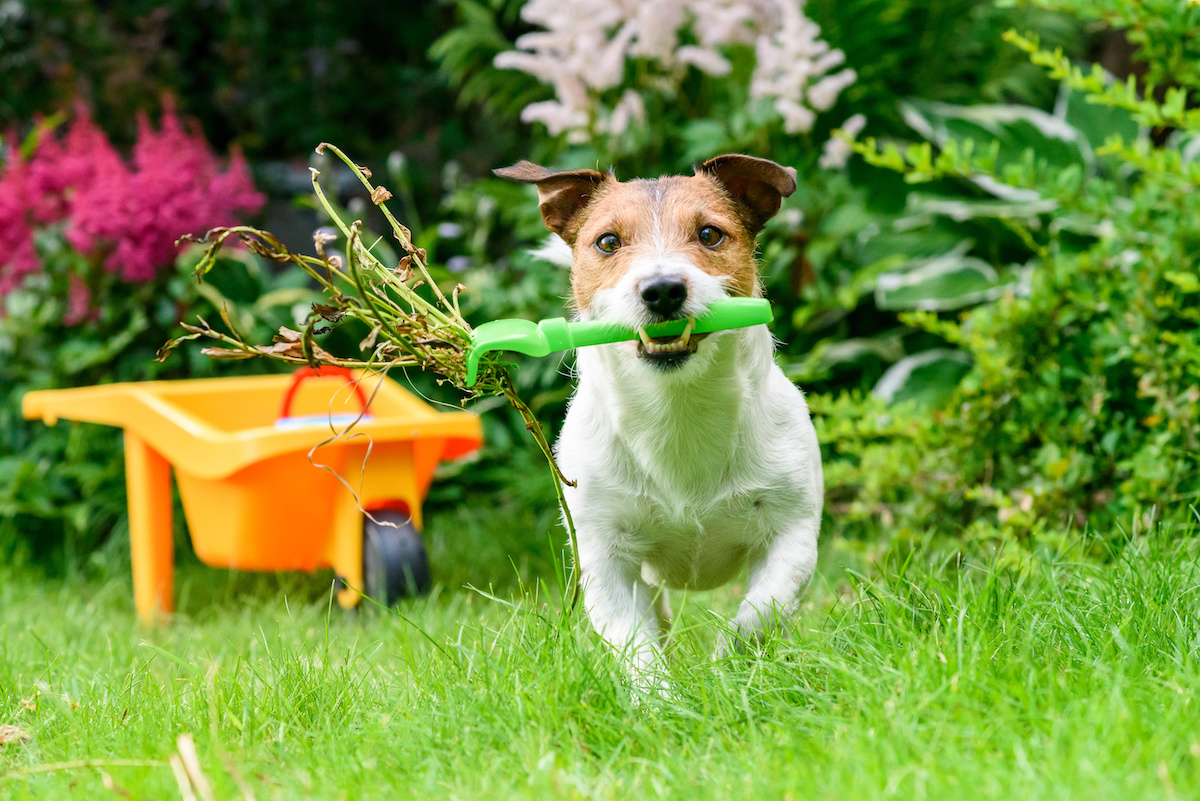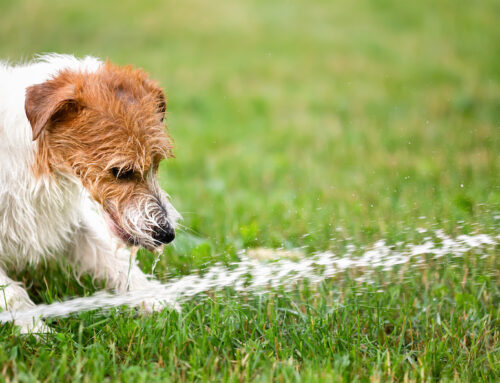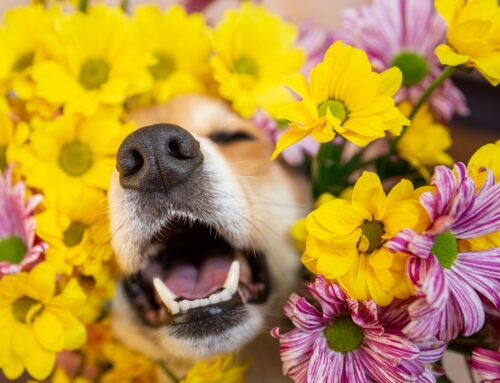The benefits of gardening go beyond aesthetics. It’s therapeutic, provides fresh food, and adds life to our living space. However, if you’re a pet owner, there’s another critical factor to consider – pet safety. To practice pet safe gardening, it’s crucial to identify toxic plants and harmful chemicals that may pose a threat to your furry friends. When you need help with pet safe gardening, please contact us at Animal Care Center!
Pet Safe Gardening: Toxic Plants to Avoid
In a pet safe gardening approach, the first step is knowing which plants could harm your pets. Here’s a list of common toxic plants:
- Lilies: Highly toxic to cats, causing severe kidney damage within 3 days of contact.
- Azaleas: Dangerous for both cats and dogs, potentially leading to vomiting, diarrhea, and even coma.
- Tulips: The bulbs are toxic to pets. Your pet may develop oral irritation and gastrointestinal upset.
- Daffodils: The bulbs can cause severe gastrointestinal illness, convulsions, and cardiac arrhythmias.
- Sago Palm: All parts of this plant are toxic, particularly to dogs, causing vomiting, bloody stools, and even liver failure.
Always check with your local nursery or vet if unsure about pet plant safety
Non-Toxic Plant Alternatives
Thankfully, there are plenty of beautiful, non-toxic plants that you can safely include in your pet safe gardening efforts. Below are some ideas for filling your summer garden with beautiful flowers this season.
Sunflowers (Helianthus):
Sunflowers are hardy, easy to grow, and safe for pets. Their bright yellow blooms will liven up your garden while their tall stems can create a sense of drama.
Marigolds (Tagetes):
These vibrant flowers are a garden favorite. They are non-toxic to pets and have the added benefit of repelling certain pests. Their beautiful orange, yellow, and red blossoms add a splash of color to any garden.
Magnolia Bushes (Magnolia):
Magnolias are pet-friendly and offer lush foliage along with large, fragrant flowers. They’re an excellent choice for adding structure and visual appeal to your garden.
Snapdragons (Antirrhinum)
Snapdragons are a delightful addition to any garden. Pet lovers enjoy these plants that come in a wide range of vibrant colors. These flowers also add a unique vertical element to your garden with their tall, slender stems.
African Violets (Saintpaulia):
While often kept as indoor plants, African violets can also be a colorful addition to your outdoor garden in the right climates. These flowers boast lovely purple, pink, or white flowers. These plants prefer a shaded area and well-drained soil.
Spider Plants (Chlorophytum comosum):
These are harmless to pets and very easy to grow. Their arching foliage can create a beautiful contrast in your garden. Meanwhile, spider plants can thrive both indoors and outdoors. No matter where you keep them, you’ll have peace of mind with pet safe gardening.
Bamboo (Bambusoideae):
This fast-growing plant is non-toxic to you and adds an exotic touch to your garden. It’s also very hardy, making it an excellent choice for inexperienced gardeners. However, ensure to choose clumping varieties to avoid unwanted spread.
Creeping Rosemary (Rosmarinus officinalis ‘Prostratus’):
This hardy, pet-safe herb not only adds a pleasant aroma to your garden but also offers beautiful, delicate blue flowers. It’s also drought-resistant and can be used in your culinary adventures.
Boston Ferns (Nephrolepis exaltata):
Non-toxic to pets and a fantastic choice for adding lush greenery to your garden, particularly in shaded areas. They’re known for their air-purifying qualities and can also make excellent indoor plants.
Catnip (Nepeta cataria):
While known as a treat for cats, it’s also a safe plant that deters pests. It produces small lavender or white flowers and can be a lovely, pet-friendly addition to your garden.
Chemical Dangers in the Garden
When practicing pet safe gardening, it’s important to be aware of chemical hazards. Common garden products like fertilizers, herbicides, and pesticides can be dangerous to pets.
- Fertilizers: Some contain harmful substances like iron, which can be toxic if ingested in large amounts.
- Pesticides: Many insecticides contain organophosphates, which are highly toxic to pets.
- Cocoa Mulch: A popular mulch type, but it contains theobromine, which is dangerous for dogs.
Natural Alternatives to Chemicals
The good news is that there are ways to keep your pet safe, even in the world of gardening. One consideration is switching to natural alternatives to chemicals. Transitioning to organic, pet safe gardening can reduce the risk posed by harmful chemicals. Here are some alternatives:
- Compost: Homemade compost is a pet-friendly, nutrient-rich soil addition.
- Diatomaceous Earth: A non-toxic alternative for pest control, effective against slugs and beetles.
- Vinegar: This common household item can serve as a natural weed killer.

What to Do if Your Pet Comes into Contact with Toxic Plants
Whether your pet has wandered into a patch of lilies or taken a bite of your beloved Sago Palm, knowing the right steps to take is crucial for their safety. Here’s a guide on what to do if you suspect your pet has come into contact with toxic plants.
Spot the Signs of Toxic Plant Ingestion
First, you need to recognize the signs of potential poisoning. These can vary based on the type of plant and the amount ingested, but common symptoms include:
- Excessive drooling or salivation
- Vomiting or diarrhea
- Loss of appetite
- Weakness or lethargy
- Difficulty breathing or rapid breathing
- Changes in behavior such as agitation or excessive sleepiness
Take Immediate Action
Time is of the essence when it comes to per safe gardening. It only takes a small amount of toxic plant contact to become deadly. If you see any of these symptoms and suspect your pet has come into contact with a toxic plant:
- Remove any plant material from your pet’s mouth: This can help prevent further ingestion. Be careful not to get bitten and avoid contact with the plant yourself.
- Collect a sample of the plant: If possible, take a sample of the plant or the plant material your pet ingested. This can be very helpful for your vet to identify the toxin involved.
- Contact your vet immediately: Explain what has happened as accurately as you can. The more information you can provide, the better prepared your vet will be to treat your pet.
- Do not induce vomiting unless instructed to do so by a vet: Inducing vomiting isn’t always beneficial. In some cases, it can cause more harm than good.
Follow-Up Actions: Contact Animal Care Center for Help
At Animal Care Center, we can help you when your pet comes in contact with toxic plants. However, it’s best to avoid planting dangerous flowers and plants in the first place. If you come to us for treatment, you’ll want to keep an eye on your cat or dog. We’ll ask you to work on the following:
- Monitoring your pet for additional symptoms
- Feeding a special diet or administering medications
- Regular check-ups to ensure recovery
Remember, immediate action can make a significant difference when it comes to pet poisoning. Always keep your vet’s contact information at hand and familiarize yourself with your nearest emergency animal hospital.
It’s also essential to make your garden and home as pet-friendly as possible, minimizing the chances of such incidents. Practicing pet safe gardening is not just about creating a beautiful environment; it’s about keeping our beloved companions safe and healthy. Please call us at Animal Care Center if you have questions!






